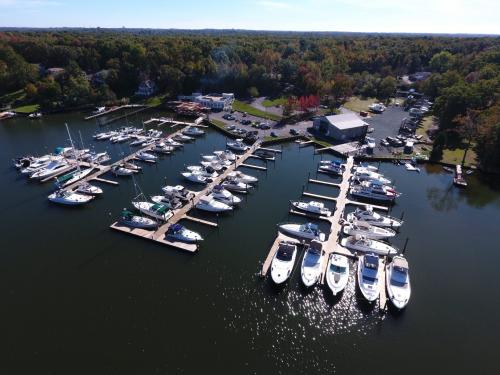A Step-by-Step Guide to renting Marina Slip

It is not so simple to find a proper resting place for a vessel at the right location. It is as difficult a task as looking for a proper parking space for your car. Usually, Marina slips are required by boat owners so that they can park their empty boats permanently. However, the location of a marina slip is a major concern. After all, all marinas are different from one another. Additionally, the layout of the docks is not the same as well.
There are a lot of things a boat owner has to take into consideration before renting a marina slip. Some marina slips may be suitable for one boat owner but may not be apt for others. However, here are some detailed steps to help you rent a marina slip Annapolis so that you can have complete peace of mind.
- Do Proper Research Or Homework Before Choosing A Marina
- Ease of Docking
First, you should rent a slip, which is hassle-free to get in and get out of. Your boat access should be easy; water should be adequate for the draft, and so on.
- Depth of Water
Water levels are steadily declining in various places. So you should check the current depth of water as it can tell you whether the marina slip to be assigned to you is deep enough for drafting or keeling. There should be sufficient water at the slip’s the inside end so that your propellers can be cleared.
- Size and Shape Of The Boat Slip
Each marina slip has a size limit for boats. You have to ensure your vessel is within that maximum size limit. Remember that additional space is always preferable.
- Location of Harbor And Marina
A boat owner has to also ensure that the harbor or marina is in proximity to the action. Find out whether the harbor has good restaurants or not. Also, check whether you need to travel many miles into the sea for anchoring or not. These points may look insignificant in the short run but are necessary for your long-term enjoyment.
- Availability of Dock Utilities
You should consider renting a slip that has proper access to water and power, particularly when you own a larger boat. Water is needed to wash the boat after a saltwater excursion. You need the power to keep the batteries charged and keep systems like light and air conditioning running while you are aboard.
- 2. Read the Owner Usage Parameters Properly
Once you have finalized or short-listed a slip after doing proper homework, your next step would be to read the usage parameters of the marina owner. Some such parameters could be as follows,
- Whether the owner permits short or long-term rentals or both
- Limitations of boat size
- Vacant or live-in parking
- Rules related to waterfront property access among others
- Permission for storage on the boat lift or not
- Enter Into a Rental Agreement
Once you have gone through the owner’s usage parameter and are okay with it is important to sign a rental agreement with the owner of the marina. Typically, an owner creates a rental agreement and ensures that he or she has adequate insurance for their particular business objectives. A rental agreement also ensures that an owner has no liability if a renter or his/her vessel succumbs to injuries or damages.
When a rented signs an agreement for using a slip, there will be no surprises for both parties. Typically, owners create a rental agreement by following those of local marinas. They may also consult their insurance agent and a lawyer to create the rental agreement
If you get the correct marina slip for you and your vessel, you can relax and have complete peace of mind. Do you reside in Annapolis and ask yourself “what are the boat marinas near me”? Follow the above steps to get a fabulous marina dockage in Annapolis or boat slips.
Post Your Ad Here
Comments